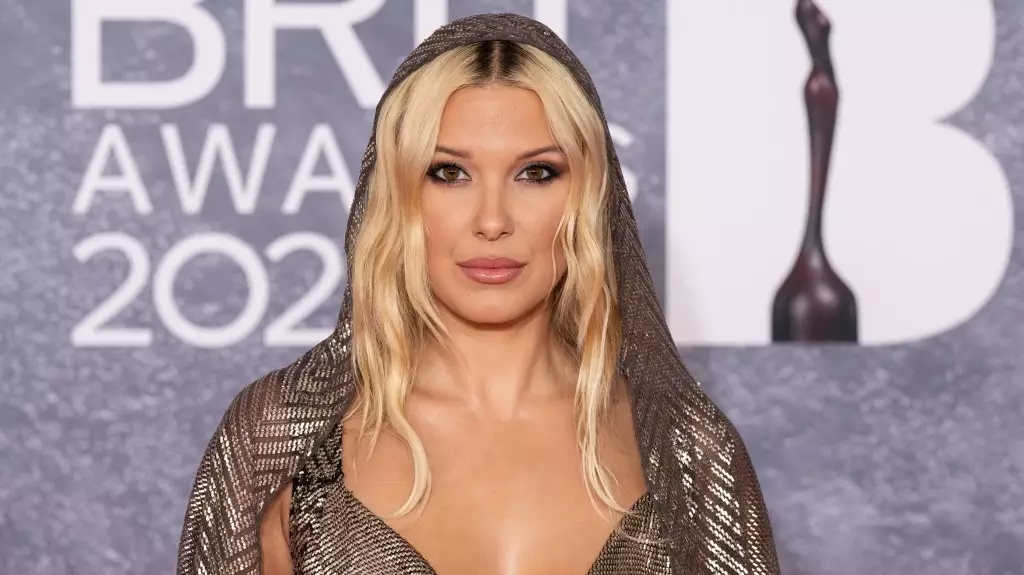In a poignant Instagram address, actress Millie Bobby Brown brought to light a troubling trend that permeates the fabric of contemporary society—the relentless scrutiny of young women in the public eye. Her passionate plea underscores a larger issue regarding how society perceives and judges female celebrities, particularly those who have grown up under the unyielding spotlight of fame. As a young woman who has evolved from a child actor in “Stranger Things” to a poised actress, Brown’s recent reflections reveal not just her personal struggles but also the broader societal problem of misogyny wrapped in the guise of entertainment journalism.
Brown’s comments served as a powerful reminder: young women aren’t merely spectacles for public consumption. The media’s fixation on her appearance—questioning why she looks different from her younger years—nudges towards a disturbing sentiment that holds women to impossible standards. At the tender age of 18, she feels the burden of unrealistic expectations imposed not just by herself but by a society that has its own knee-jerk reactions to female maturation. The Instagram video she shared is more than just a critique of media practices; it’s a clarion call, urging us to rethink our relationship with young women in public life who are subjected to such disproportionate levels of scrutiny.
Sadly, Brown’s observances reveal a painful truth: the line between critique and bullying has blurred in the age of clickbait journalism. The articles she highlighted, laden with cruelty and ridicule, exemplify the way in which media often prioritizes sensationalism over sensitivity. Headlines questioning her looks and even comparing her to a mother figure turn a naturally occurring phenomenon—growing up—into a spectacle. This not only undermines her dignity, but also illustrates a toxic culture where disparagement and derision are acceptable forms of engagement.
What further complicates this narrative is the role of female writers participating in this form of bullying. As Brown pointed out, there’s a tragic irony in women attacking women, perpetuating cycles of judgment and criticism. This dissonance raises an important question: Why are we, as women, often our own worst enemies? The struggle against media scrutiny and societal expectations is one that should unite women, not pit them against one another. Instead of tearing each other down for the sake of ephemeral clicks and likes, we should be fostering a culture of support, encouragement, and understanding.
Brown’s courageous confrontation of this issue reflects a larger discourse on the psychological impact of media scrutiny on young women. There is a significant psychological burden placed upon individuals who grow up under such circumstances—the scrutiny affects everything from self-esteem to mental health. The pressure to fit neatly into predetermined molds can stifle authenticity and lead to anxiety.
Critics and commentators often trivialize this issue, suggesting that celebrities should simply “take it in stride” or “grow thicker skin.” However, this viewpoint fails to acknowledge the humanity behind the public persona. Brown’s sentiments resonate with many young women who find themselves navigating their identities under the harsh gaze of social media and public opinion, a reality that is likely to shape not just their self-perception but future generations of women as well.
Public sentiment has the power to influence how the industry treats rising stars. Essentially, perhaps we should be asking ourselves how deep-rooted biases affect the perception of young women. Brown articulated a call to action, asking her audience: Why is it so much easier to criticize rather than uplift? This painful truth rings particularly relevant in an era where social media seems to thrive on animosity and negativity.
In the coming years, we must advocate for a shift in media narratives, especially surrounding young women in the entertainment industry. It is crucial for all of us—fans, writers, critics, and media outlets—to engage in more meaningful and respectful conversations. The tradition of tearing down figures, particularly those who are still finding their footing, must end. We owe it to our youth, and to ourselves, to create an environment where young women can grow without fear of being judged or objectified just for existing.
This community responsibility may be the only way forward, not just for Millie Bobby Brown but for every young woman who deserves the right to grow, evolve and thrive free from the shackles of unrelenting scrutiny.

